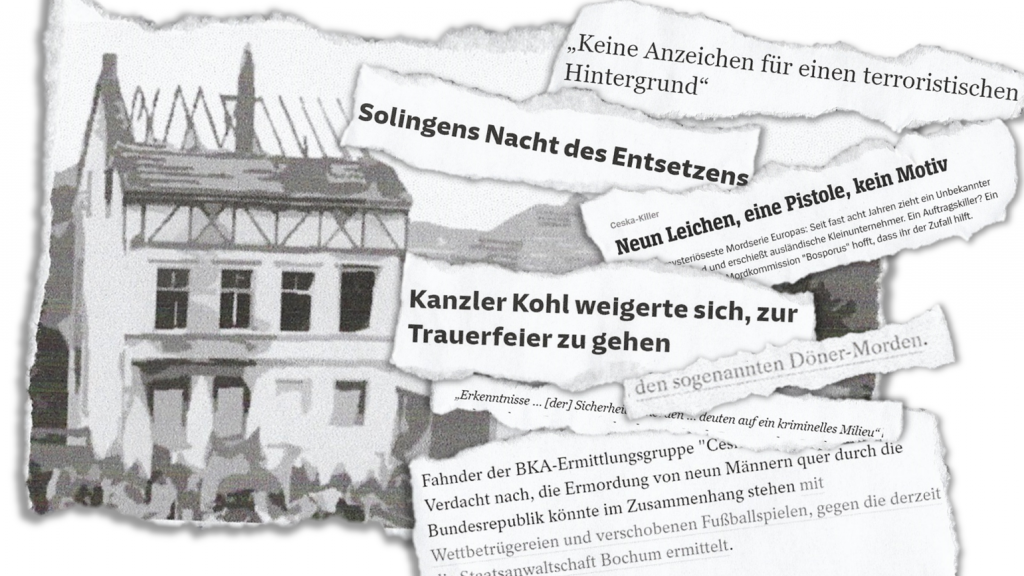
Remembering is important, but dealing with memory is also fraught with conflict. Since the constructs of the past are constantly being rewritten, there is also a permanent struggle over which ideas will find their way into the base narrative and thus contribute to the self-image of a society. Three examples show how conflicting the practice of remembering can be.
Potential for conflict – three examples
In 2006, relatives of nine murdered people took to the streets. “No 10th victim!” (“Kein 10. Opfer!”) they demanded at these demonstrations in Dortmund and Kassel. Since 2000, nine people with a migration background had been murdered with the same weapon. Despite information from those affected, the investigating authorities did not consider racism and right-wing extremism as motives for the murders. Instead, the murdered persons and their relatives were blamed. Organised crime and drug dealing were proposed as the motives for the murders. It was not until 2011, when the right-wing terrorist network NSU exposed itself, that the real perpetrators became known.
Another example: Five people died in a racist arson attack in Solingen on May 29, 1993:
- Gürsün İnce (27)
- Hatice Genç (18)
- Gülüstan Öztürk (12)
- Hülya Genç (9)
- Saime Genç (4)
The city promised those affected a memorial in the centre of Solingen. However, the memorial was not built there, but further away. The memory of right-wing violence in the city was thus marginalised – physically and symbolically.
Another example can be found in Rostock: On the 25th anniversary of the Rostock-Lichtenhagen pogrom, the city commissioned the erection of a memorial. The artist group SCHAUM addressed the role of “politics”, “vigilante justice”, “state power”, “media” and “society” with five stelas at different locations in the city. The perspective of those affected, who had been attacked or abandoned by these authorities, was simply ‘forgotten’. It was not until a year after the unveiling that a 6th stele was created on the theme of “empathy” with those affected.
Conflicts and controversies
These three examples show the problems of making acts of violence invisible due to racist prejudices, but also the conflict-ridden dynamics of remembering and forgetting in practice. The participants in the workshops also reported on the potential for conflict: